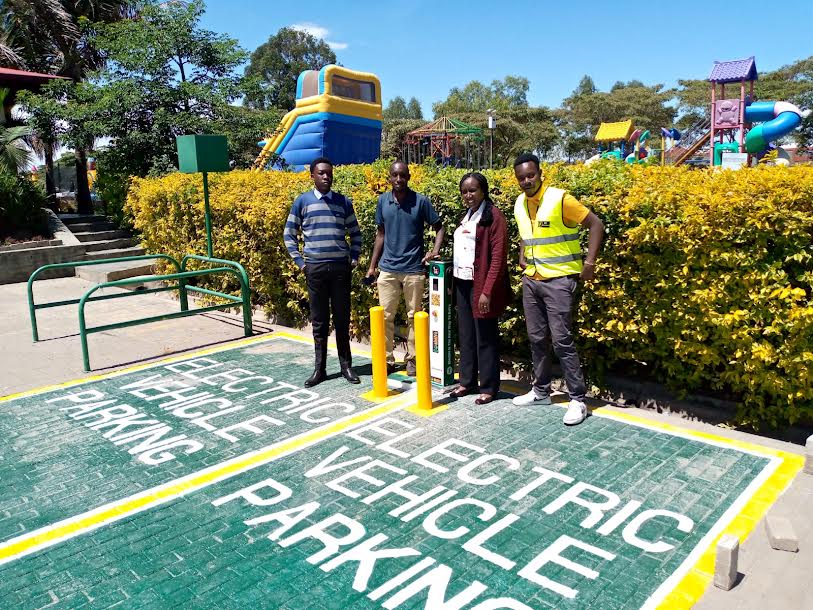By Dickson Naftali
Africa is one of the world’s most vulnerable regions to climate shocks. The continent’s overdependence on rain-fed agriculture and pastoralism exposes it to the vagaries of climate change. As a result, hunger affects 282 million Africans, a number that will grow to 350 million by 2050. Many of these victims are young people who are increasingly jobless on account of the failing farms and other enterprises across the agricultural value chain.
This large youth population is constantly entering the labour market requiring African economies, which are predominantly agricultural, to rapidly create a large number of jobs. This presents structural economic challenges that are exacerbated by pressure from climate change as environmental and agroecological changes result in lower crop productivity, more land scarcity and higher risks of extreme weather events.
Whichever way you look at it, today’s youth will suffer the brunt of climate change well into their old age, as will the youth of 2050. This is because climate-induced environmental change reduces both the quality and quantity of agricultural land resulting in fewer livelihood sources and an increased propensity for migration. The Food and Agriculture Organization of the United Nations (FAO) affirms this, noting that climate change is a significant threat-multiplier for factors that cause youth migration, especial lly in agriculture-dependent populations and regions, such as those in Africa.
That is unless urgent action is taken to either reverse or manage the situation, with the youth at the forefront of all action. The advantage of working with young people is that they possess the innovation, motivation, and physical strength needed to drive action. A good number of them are deriving innovations, which are gradually defining the future of the continent’s agricultural practice. Take for instance the early-stage winner of the 2022 Pitch Agri Hack competition, Tunisian Imen Hbiri, who was recognised for his multispectral disease detector, Robocare; or the mature-stage awardee, Hamis El Gabry of Egypt, with his Mozare3, an agri-fintech company that connects small farmers to the agriculture supply chain. And who can forget the 2020 Africa Food Prize winner, Dr.
Catherine Nakalembe, the Programme Director for NASA Harvest Africa, the space agency’s food security and agriculture programme for Africa? Dr. Nakalembe’s team uses satellite remote sensing and machine learning to collect the data needed to guide agricultural decision-making. It is the combination of youthfulness, and exposure to the world’s best training that allows Dr. Nakalembe, El Gabry and Hbiri to derive impactful solutions.
Seeing such well-thought-out and packaged products emerge out of Africa as local solutions to local problems is exciting. And these outrightly show the youth’s eagerness in redefining the state of the continent’s agriculture.
Yet these leading youthful innovators are only a handful compared to the millions that desire to lead transformation at the farm level, as producers. Their engagement requires accelerating opportunities for improving farm productivity, strengthening agricultural value chains, and participating in value- added processing. This calls for significant investments in agricultural education at all levels, focused on a transition away from the perception that the sector is for people who have failed to make a living in other ways. A quote by African Development Bank boss, Dr. Akinwumi Adesina, along the lines of “the next generation of millionaires and billionaires in Africa, will be farmers” should be recited many more times for it to sink in.
In driving this messaging, it may be important to ponder AGRA’s youth strategy, which identifies several actions as instrumental in boosting the participation of youth in agriculture, as a defining factor in the fight against climate change. Firstly, governments must support agricultural innovation; improve market and rural infrastructure; and strengthen the business environments in ways that raise incomes and expand agriculture value chains.
Secondly, there is a need to increase and improve the capacity of youth to profitably engage in activities along the agriculture value chain through agribusiness training. This is in addition to improving youth employment and business opportunities by building strong businesses in inputs (seed, fertilisers, and agro-chemicals); mechanisation (planting, spraying, and harvesting), and outputs (aggregation, value addition and processing, marketing, and finance).
Further, it is important to increase smallholder farm productivity through irrigation and water management and improve access to markets and financial services through ICT, mechanisation, and other services. Lastly, and high in priority, there is a need to improve the policy environment for youth participation in agriculture and agribusiness as well as establish special funds including credit guarantee schemes that de-risk lending to youth.
These strategic pointers form the foundation of Climate-Smart Agriculture (CSA) which generates multiple benefits including improved yields, food security and increased income. Components of CSA include stress-adapted crop varieties and livestock breeds; improved seeds; crop diversification; conservation agriculture; water management; agroforestry, and integrated soil management. Yet despite this proven relevance in agricultural transformation, the adoption of effective CSA technologies and practices by young African farmers remains limited, majorly due to financial constraints. Appropriate financial, policy and institutional arrangements are, therefore, needed to scale up agricultural technologies and practices.
Meanwhile, Africa’s youth in agriculture must be outrightly placed at the front of all climate action advocacy. Their voices should be amplified during the annual climate change convention (CoP), all events surrounding the annual stocktake of the Paris Agreement, and agricultural conventions such as the September Africa Food Systems Forum.

















